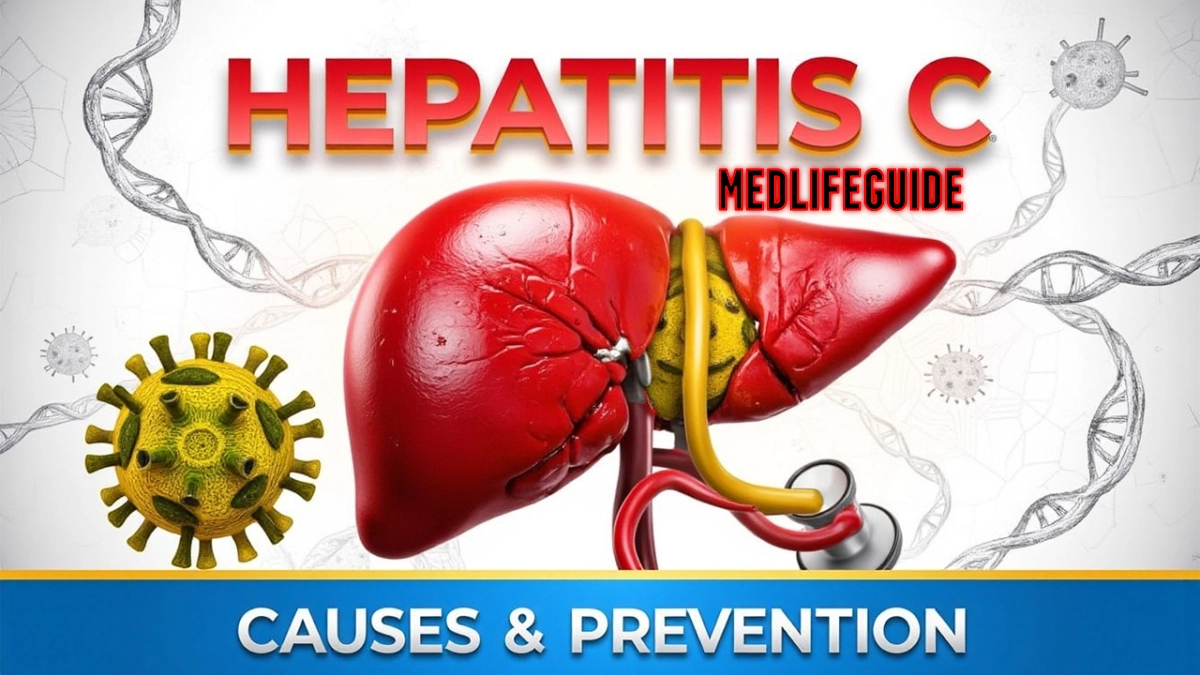Hepatitis C is a viral infection that attacks the liver, often leading to chronic illness if left untreated. Unlike hepatitis A and B, there’s no widely available vaccine for hepatitis C, making prevention strategies crucial. Understanding its causes and how to avoid transmission can save lives.
In this guide, we’ll explore:
- How hepatitis C spreads
- Key risk factors
- Effective prevention methods
- Common misconceptions
Whether you’re at risk or simply want to stay informed, this article provides actionable insights backed by medical expertise.
What Causes Hepatitis C?
Hepatitis C is caused by the hepatitis C virus (HCV), which spreads primarily through blood-to-blood contact. Unlike foodborne or sexually transmitted infections, HCV requires direct exposure to infected blood.
Primary Transmission Routes
- Contaminated Needles & Medical Equipment
- Sharing needles among drug users is the most common cause.
- Improperly sterilized tattoo or piercing tools can also transmit HCV.
- Rare cases involve reused medical equipment in healthcare settings.
- Blood Transfusions & Organ Transplants (Pre-1992)
- Before widespread screening, blood donations were a major HCV source.
- Modern testing has nearly eliminated this risk.
- Mother-to-Child Transmission
- About 6% of infants born to HCV-positive mothers contract the virus.
- Risk increases if the mother has a high viral load or HIV co-infection.
- Household Exposure (Very Rare)
- Sharing razors, toothbrushes, or nail clippers with an infected person poses a slight risk.
Less Common Causes
- Needlestick Injuries (Healthcare Workers)
- Unregulated Medical Procedures (e.g., in countries with poor sterilization practices)
Who Is at Risk?
- Intravenous drug users (even one-time sharing can transmit HCV)
- Healthcare workers exposed to needlesticks
- People who received blood transfusions before 1992
- HIV-positive individuals (due to overlapping risk factors)
- Those with tattoos/piercings from unlicensed facilities
- Born to an HCV-positive mother
How to Prevent Hepatitis C
Since there’s no vaccine, prevention relies on avoiding exposure:
1. Avoid Sharing Needles or Personal Items
- Use sterile needles if injecting drugs (many harm-reduction programs provide clean syringes).
- Never share razors, toothbrushes, or nail clippers.
2. Choose Safe Tattoo & Piercing Studios
- Ensure the facility uses single-use needles and autoclave sterilization.
- Avoid underground or unregulated shops.
3. Healthcare & Blood Safety
- Always confirm that medical/dental equipment is sterilized.
- Screen blood donations (standard in most countries).
4. Get Tested & Seek Early Treatment
- If you’re at risk, get an HCV antibody test.
- New antiviral medications (like DAA therapy) cure >95% of cases.
Common Myths About Hepatitis C
- “You can get HCV from casual contact.”
- Fact: HCV spreads only through blood exposure, not hugging, kissing, or sharing food.*
- “Only drug users get hepatitis C.”
- Fact: Many people contract it from medical procedures, tattoos, or unknown exposures.*
- “Hepatitis C always shows symptoms.”
- Fact: Many carriers have no symptoms for years, leading to undiagnosed liver damage.*
Key Takeaways
- Hepatitis C spreads only through blood, not casual contact.
- High-risk groups include IV drug users, healthcare workers, and those with pre-1992 blood transfusions.
- Prevention includes avoiding needle sharing, using safe tattoo studios, and practicing safe sex if at risk.
- Early testing and treatment can cure HCV before liver damage occurs.
Final Thoughts
While hepatitis C can be a silent threat, awareness and proactive measures drastically reduce infection risks. If you suspect exposure, get tested immediately—modern treatments are highly effective.
For more detail about symptoms of hepatitis C CLICK HERE

